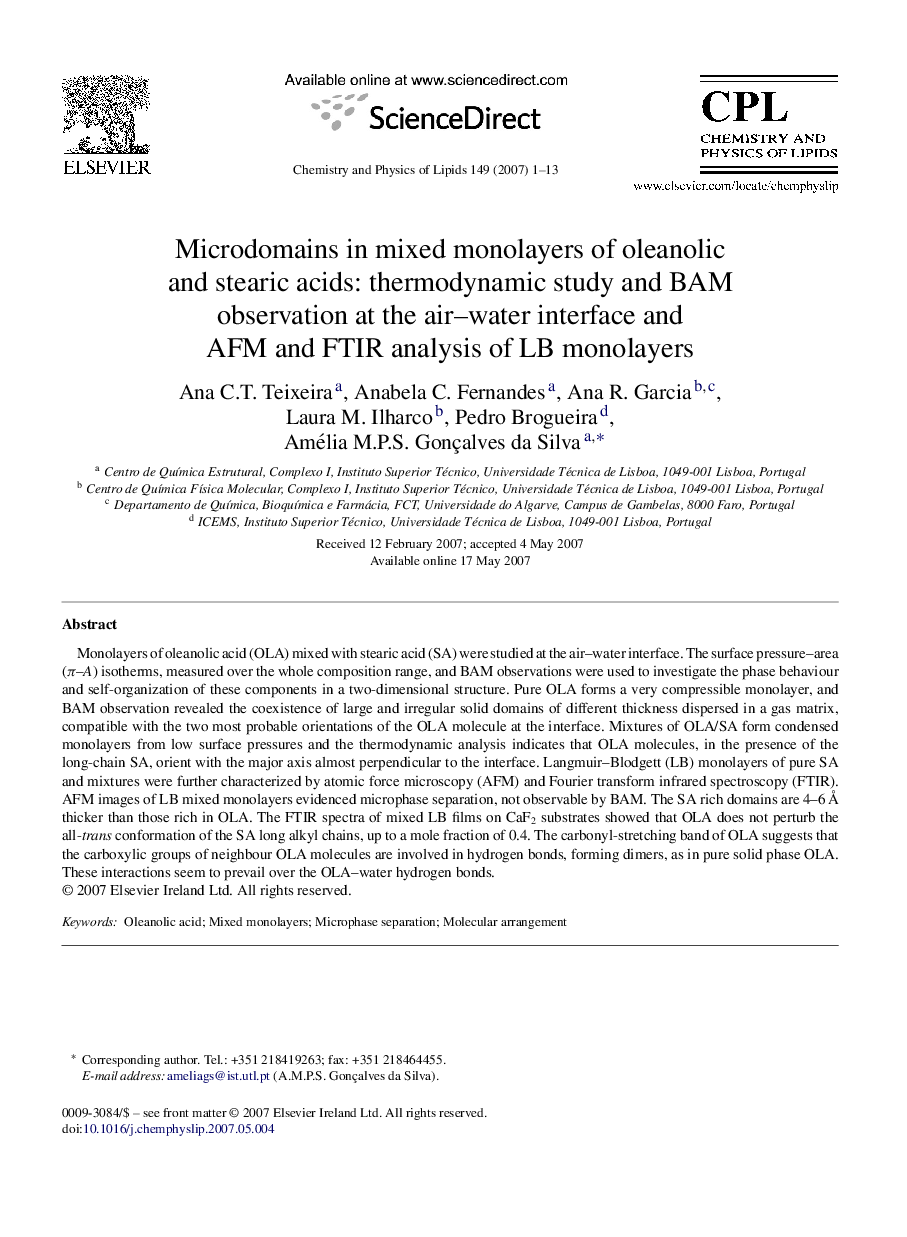| Article ID | Journal | Published Year | Pages | File Type |
|---|---|---|---|---|
| 1252436 | Chemistry and Physics of Lipids | 2007 | 13 Pages |
Monolayers of oleanolic acid (OLA) mixed with stearic acid (SA) were studied at the air–water interface. The surface pressure–area (π–A) isotherms, measured over the whole composition range, and BAM observations were used to investigate the phase behaviour and self-organization of these components in a two-dimensional structure. Pure OLA forms a very compressible monolayer, and BAM observation revealed the coexistence of large and irregular solid domains of different thickness dispersed in a gas matrix, compatible with the two most probable orientations of the OLA molecule at the interface. Mixtures of OLA/SA form condensed monolayers from low surface pressures and the thermodynamic analysis indicates that OLA molecules, in the presence of the long-chain SA, orient with the major axis almost perpendicular to the interface. Langmuir–Blodgett (LB) monolayers of pure SA and mixtures were further characterized by atomic force microscopy (AFM) and Fourier transform infrared spectroscopy (FTIR). AFM images of LB mixed monolayers evidenced microphase separation, not observable by BAM. The SA rich domains are 4–6 Å thicker than those rich in OLA. The FTIR spectra of mixed LB films on CaF2 substrates showed that OLA does not perturb the all-trans conformation of the SA long alkyl chains, up to a mole fraction of 0.4. The carbonyl-stretching band of OLA suggests that the carboxylic groups of neighbour OLA molecules are involved in hydrogen bonds, forming dimers, as in pure solid phase OLA. These interactions seem to prevail over the OLA–water hydrogen bonds.
